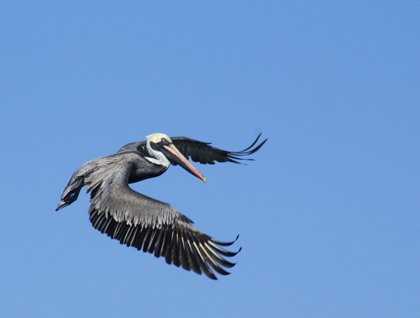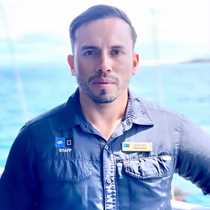We started our day with an early hike to explore the greenery along the coast of Espumilla Beach on Santiago Island. Some young Galápagos hawks and many endemic species of plants were sighted here. It was just a perfect way to start our day following in Darwin’s steps in the enchanted archipelago.
After breakfast we went snorkeling at Buccaneer’s Cove. Many species of tropical fish were seen, and we even encountered some fur seals in the water. A Zodiac ride showed us all the species of shore and marine birds resting along the red cliffs of this visitor site. Nazca boobies were flying over while frigates were sitting on the edges of cliffs.
It’s remarkable that Buccaneer’s Cove was well visited by early navigators in search of giant tortoises and freshwater. Darwin himself spent nine days on the island of Santiago and explored the highlands of the Galápagos for the first time in this place.
During the afternoon we had a wet landing at Egas port. We had a two-hour walk along the coast of Santiago in search of migratory birds, and endemic shore birds feeding on the small fish stuck in the tide pools left by the low tide. Some American oystercatchers were seen, as well as large colonies of marine iguanas basking under the sun. The area along the coast had fascinating geological formations where some species have taken over and made those places their home. Such is the case of the Galápagos fur seal living around where the collapsed lava tubes that meet the ocean. The night was arriving so the fur seals started to become more active and get ready to go out in search of food as these are nocturnal animals.
A beautiful equatorial sunset sealed our day while we were heading back to the National Geographic Islander.







